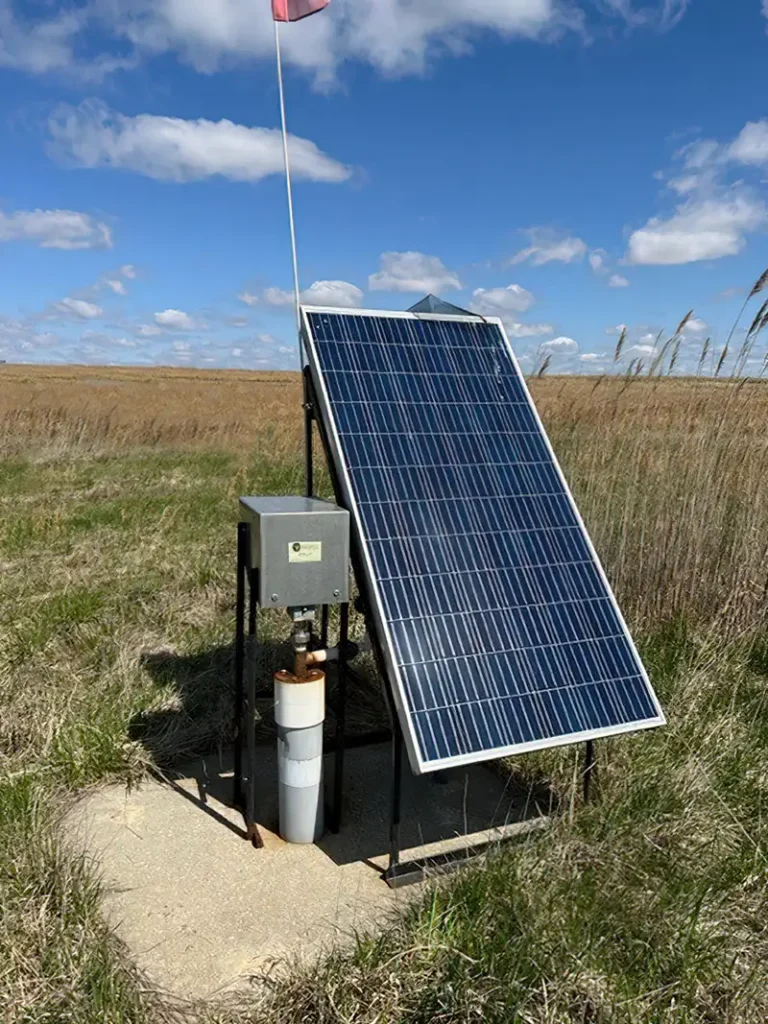Apollo Solar Pumps Operate at
Remote Sites, Without Trenched Power
Near coal-fired electric power plants across the U.S. lies the residue of burned bituminous. The EPA calls it Coal Combustion Residuals (CCRs) — a combination of powdery light ash, heavy bottom ash, boiler slag and flue-gas desulfurization material.
The residue is commonly known as coal ash. It is often buried at sites officially classified as solid-waste landfills.
As with all landfills, rainwater can infiltrate a site to create liquid leachate. Coal-ash fluid is clear but can contain salts, heavy metals and other toxic chemicals. Fugitive coal-ash leachate can threaten public health.
